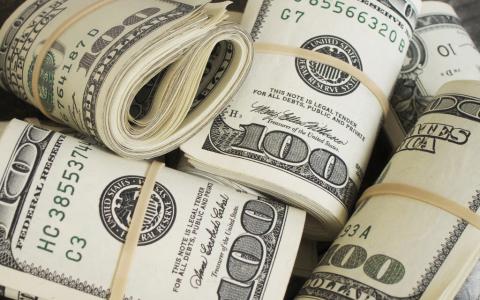
The Fed raised the overnight funds rate 25 bips as expected.
No one was surprised. But when Fed chairman Jerome Powell said that they will hike more in 2019 if inflation rises on economic growth — which it, of course, will — the Fed will just hike less rather than stop. In other words, even if the economy slows, the Fed funds rate is going higher.
This is hawkish, and a head-scratcher.
The Fed "adopted a slightly more hawkish tilt to policy at this meeting," HSBC Global Research analysts led by Kevin Logan in New York wrote in a note to clients last night.
"The shift was apparently motivated by a re-assessment of the outlook for economic growth and inflation. Our own forecasts for the federal funds rate are unchanged. We still anticipate two more rate hikes this year and one additional rate hike in 2019," he says.
That is becoming less of the consensus view, however. BNP Paribas, JP Morgan, Goldman Sachs and UBS all expect four hikes this year.
The market has priced in three hikes, but a fourth hike would likely raise the Fed funds rate by more than 100 basis points, which could easily push the 10-year Treasury bond over 3%. That would be a sell sign for equities, particularly dividend-paying equities that were the ticket for yield for so many years.
Nomi Prins, an ex-Goldman Sachs banker who has spent much of her off-Wall Street life writing about its many flaws, says she does not believe there will be four hikes this year, "because the Fed remains concerned about not popping various asset bubbles."
The contrarians over at The Daily Reckoning sent a cautious reminder to subscribers last night that 10 of 13 post-World War II tightening cycles have ended in recession. And at 105 months of economic expansion, the current bull market is running on fumes.
By May it will become the second-longest bull market in history.
"Tread carefully, Mr. Powell," "By next summer — if the gods still smile — it will become the longest," says Brian Maher, DR's managing editor.
"Tread carefully, Mr. Powell," he says.
Diverging views in the markets will result in a volatile next few days. Throw in Trump's new China tariff threat and more red letter days are likely on Wall Street.
Everyone was busy putting out their investor notes last night.
And few were optimistic.
"Powell is adhering to the anti-growth logic used by Yellen," says macro investment research shop Bretton Woods Research in their note.
"If economic data remains on a consensus uptrend, the economy should expect three rate hikes. And, if the uptrend exceeds consensus, expect even more rate increases. As he put it: 'if the economy (stocks) do well, the pace of rate hikes could be less gradual, but if the economy slows down, then the pace of rate hikes could be more gradual'. Such a posture would essentially act like a wet blanket on risk appetites and equities this year," Bretton Woods founder Vladimir Signorelli wrote.
The Fed's monetary policy committee projects GDP growth of 2.7% this year due to fiscal stimulus, then wearing off to 2.4% next year. Four hikes will probably undercut some of that.
The projections for both years are well above the Fed's forecast for longer-term GDP median growth rates of just 1.8%. The Fed essentially wants to prevent faster GDP growth in order to keep inflation within its 2.1% target.
HSBC is projecting a lower rate of core inflation in both 2018 and 2019 than what the Fed is thinking.
"If we are right, then policymakers may decide that fewer rate hikes will be necessary than the current projection of three rate hikes in 2019 and two more in 2020," says Logan.



